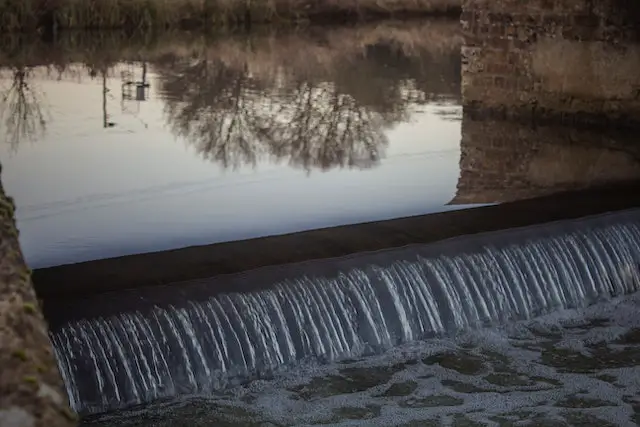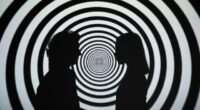Hydrology is the study of the movement, distribution, and quality of water on Earth, including the hydrologic cycle and the impact of human activity on water resources. Hydraulics, on the other hand, is the study of the behavior of fluids, including water, in engineering systems, such as pipes, channels, and pumps.
Hydrology
(Photo by James Frid)

Hydrology is the scientific study of water in the Earth’s system, including its movement, distribution, and quality. Hydrologists study the ways in which water interacts with the environment, including the atmosphere, oceans, rivers, lakes, groundwater, and glaciers. This includes the study of precipitation, evaporation, infiltration, runoff, and the movement of water through different parts of the Earth’s system. Hydrology is an interdisciplinary field that combines principles from geology, geography, chemistry, physics, and engineering, and plays a crucial role in managing water resources, mitigating the effects of floods and droughts, and understanding the impacts of climate change on water systems.
Hydraulics

Hydraulics is the scientific study of the behavior of fluids, including water, and their applications in engineering and mechanical systems. This includes the study of how fluids transmit force, pressure, and energy, and how they behave in different types of systems, such as pipes, pumps, and hydraulic machines. Hydraulics is used in a wide range of applications, from civil engineering (such as water supply and sewage systems) to mechanical engineering (such as heavy machinery and vehicle systems), and requires a deep understanding of fluid mechanics, materials science, and control systems. Hydraulics is essential for many modern technologies, and has played a critical role in advancing industry, transportation, and infrastructure.
Hydrology Vs. Hydraulics – Key differences
Hydrology and hydraulics are two related but distinct fields of study.
Hydrology is primarily concerned with the study of water in the Earth’s system, including its movement, distribution, and quality. Hydrologists study the ways in which water interacts with the environment, including the atmosphere, oceans, rivers, lakes, groundwater, and glaciers. They investigate the hydrologic cycle, including precipitation, evaporation, infiltration, runoff, and the movement of water through different parts of the Earth’s system. Hydrology is also concerned with the effects of human activities, such as land use changes, irrigation, and pollution, on water resources.
Hydraulics, on the other hand, is the study of the behavior of fluids, including water, in mechanical and engineering systems. Hydraulics is concerned with the principles of fluid mechanics and the applications of those principles in hydraulic systems such as pumps, pipes, and valves. It is primarily focused on the movement and control of fluids, and how they interact with mechanical systems.
The key differences between hydrology and hydraulics can be summarized as follows:
Scope: Hydrology is focused on the study of water in the Earth’s system, while hydraulics is focused on the behavior of fluids in mechanical and engineering systems.
Applications: Hydrology is primarily concerned with the management of water resources, including the mitigation of floods and droughts, while hydraulics is concerned with the design and operation of hydraulic systems, such as pumps and valves.
Methods: Hydrology uses a range of methods, including field observations, laboratory experiments, and computer modeling, while hydraulics relies heavily on mathematical modeling and simulation to understand fluid behavior in hydraulic systems.
How hydrology and hydraulics are used together?
Hydrology and hydraulics are often used together in water resources engineering and management.
Hydrology provides information on the quantity, quality, and distribution of water resources, which is crucial for designing and managing hydraulic systems. For example, hydrologic data is used to design the capacity of hydraulic structures such as dams, reservoirs, and canals, to ensure that they can effectively store, transport, and deliver water to meet the needs of users.
Hydraulics, on the other hand, is used to design and operate hydraulic systems, such as water supply and distribution systems, sewage systems, and irrigation systems. By understanding the principles of fluid mechanics, engineers can design hydraulic systems that are efficient, effective, and reliable, and that can meet the demands of users under various operating conditions.
Together, hydrology and hydraulics are used to manage water resources in a sustainable and effective manner. By understanding the behavior of water in natural and engineered systems, engineers and hydrologists can make informed decisions about the allocation, management, and protection of water resources, and ensure that these resources are used in a way that is equitable, efficient, and environmentally responsible.
What is application of hydraulic and hydrology?
Hydraulics and hydrology are used in a wide range of applications, including:
Water supply and distribution: Hydraulics is used to design and operate water supply and distribution systems, while hydrology is used to understand the quantity, quality, and distribution of water resources.
Flood management: Hydrology is used to predict and mitigate the effects of floods, while hydraulics is used to design and operate flood control structures, such as levees, dams, and channels.
Irrigation: Hydraulics is used to design and operate irrigation systems, while hydrology is used to understand the availability and quality of water resources for irrigation.
Wastewater management: Hydraulics is used to design and operate wastewater treatment systems, while hydrology is used to understand the impacts of wastewater on surface water and groundwater resources.
Coastal engineering: Hydraulics is used to design and operate coastal structures, such as jetties, breakwaters, and seawalls, while hydrology is used to understand the impacts of sea level rise, storm surge, and erosion on coastal ecosystems and communities.
Environmental management: Hydrology and hydraulics are used to understand the impacts of human activities, such as land use changes and pollution, on water resources and ecosystems, and to design and implement management strategies to protect and restore these resources.
The applications of hydrology and hydraulics are critical for the sustainable management of water resources, the protection of human health and the environment, and the development of infrastructure and economies around the world.
What is hydrology and hydrodynamics?
Hydrology and hydrodynamics are related fields, but they have different focuses.
Hydrology is the study of the water cycle, including the occurrence, distribution, movement, and quality of water on the Earth’s surface, in the soil, and in the atmosphere. Hydrologists use observations, measurements, and models to understand how water moves through the environment and interacts with the landscape, vegetation, and human activities. Hydrology is concerned with issues such as water supply and demand, flood forecasting, drought management, and water quality.
Hydrodynamics, on the other hand, is the study of the motion of fluids, including liquids and gases. It is a branch of fluid mechanics that focuses on the behavior of fluids in motion, including their flow patterns, pressure distributions, and forces. Hydrodynamics is used to understand and design fluid systems, such as pumps, turbines, pipes, and channels, and to solve problems related to fluid flow, such as drag, lift, and turbulence. Hydrodynamics is used in a wide range of fields, from aerospace engineering to oceanography.
Hydrology is concerned with the study of the water cycle, while hydrodynamics is concerned with the study of fluid motion. While there is some overlap between the two fields, they have distinct focuses and applications.
What is the importance of hydraulics in hydrology?
Hydraulics is important in hydrology because it is used to model the movement of water through natural and engineered systems. Hydraulic models are used to predict and analyze the flow of water in rivers, streams, and channels, and to design and operate hydraulic structures, such as dams, levees, and culverts. These models take into account factors such as the slope of the terrain, the roughness of the channel, the volume and velocity of water, and the effects of changes in flow caused by factors such as rainfall, snowmelt, and land use changes.
Hydraulic models are essential tools in hydrology because they help scientists and engineers to understand and predict the behavior of water in the environment. By using hydraulic models to simulate different scenarios, hydrologists can identify potential problems and develop solutions to mitigate the effects of floods, droughts, and other water-related hazards. Hydraulic models are also used to design and optimize water supply and distribution systems, irrigation systems, and wastewater treatment systems.
Overall, the use of hydraulics in hydrology enables us to better understand and manage the water resources of the Earth, and to develop sustainable solutions to the challenges we face related to water availability, quality, and management.
What are uses of hydraulic system?
Hydraulic systems are widely used in many industries and applications because they offer a number of advantages over other types of systems. Some of the key uses of hydraulic systems include:
Heavy equipment: Hydraulic systems are commonly used in heavy equipment, such as excavators, bulldozers, and cranes, to provide the power needed to lift heavy loads and move large objects.
Manufacturing: Hydraulic systems are used in manufacturing to power presses, stamping machines, and other equipment that requires precise force and control.
Aerospace: Hydraulic systems are used in aircraft to control landing gear, flaps, and other systems that require precise movement and control.
Automotive: Hydraulic systems are used in automobiles for braking, power steering, and suspension systems.
Agriculture: Hydraulic systems are used in farming equipment, such as tractors and combines, to power implements and control movement.
Mining: Hydraulic systems are used in mining equipment to power drills, crushers, and other machinery used in mining operations.
Construction: Hydraulic systems are used in construction equipment, such as backhoes and loaders, to power the movement of the equipment and the tools attached to it.
Hydraulic systems are versatile and reliable, and they are used in a wide range of industries and applications where precise force and control are required.








